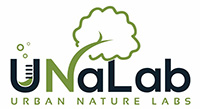 |
Inspiration Card
Co-Creation |
|
Format of the Tool
|

|
C7 Lego Serious Play
| Idea Generation | Stakeholder & Citizen Engagement | Need finding | Planning & Development | Evaluation | Learning |
1 table facilitator per groups of 5 people.
|
Timeframe
|
|
|
Hours
|
1 per question
|
A hands-on, minds-on serious game where participants are posed with challenges, to which the answers are built using Lego bricks: building 3D models of your thoughts. The workshop is built on a tried and tested process of building, sharing and reflecting, creating an equal playing, thinking, sharing and learning ground for all participants. Through this process of building and sharing Lego models and their stories, insights, and meaningful discussions are conducted to address serious challenges.
The methodology starts with a short introduction presentation explaining the history behind Lego Serious Play and continues on to a series of skills building exercises. Throughout the skills building exercises participants are introduced to the flow of the methodology, while building up crucial skills needed in order to be able to foster the seriousness of the game: from technical skills, to the skill of creating metaphors using Lego bricks, to the skill of telling stories through your model.
Once participants are feeling comfortable with the methodology throughout the skills building exercises, the posing of the serious questions can begin. The first question is presented on the slides, to which each participant is given 3-5 minutes to build their answer to. Each participant builds their own model.
Once the models are built, an alarm rings to signify the end of the building time. At this moment, the table facilitators start with the first person to their left, by asking the participant to share their model. The participant tells the story of their model in 2-5 minutes, while the rest of the group listens.
The facilitator is trained to ask targeted follow-up questions, in order to dig deeper and to uncover further potentially hidden ideas that the model signifies.
After the first person has shared their model and follow-up questions are answered, the facilitator moves on to the next person, and the process is repeated.
At the end, the models are broken up and pieces are returned back in the middle of the table for the next question, and the same process is repeated. In some cases, however, a shared model is built instead - in this case, the models are not broken up completely, but the participants are allowed to keep one crucial part of their model - one metaphor, which they find most important. This metaphor is then moved to a base plate in the middle, shared with the others, and the building of a common model commences. In the common model each participant can thus bring one item to the table, after which the team can together begin building connections and shared ideas around these key elements.
- The warm-up skills building exercises at the beginning (20-30 minutes) are a must and table facilitators must be trained.
- Presentation Slides
- Post-its & pens
- Timer
- Legos
- Idea development.
- Scenario Building
- Sharing values and behaviours.
- Strategy Development
- Vision creation
